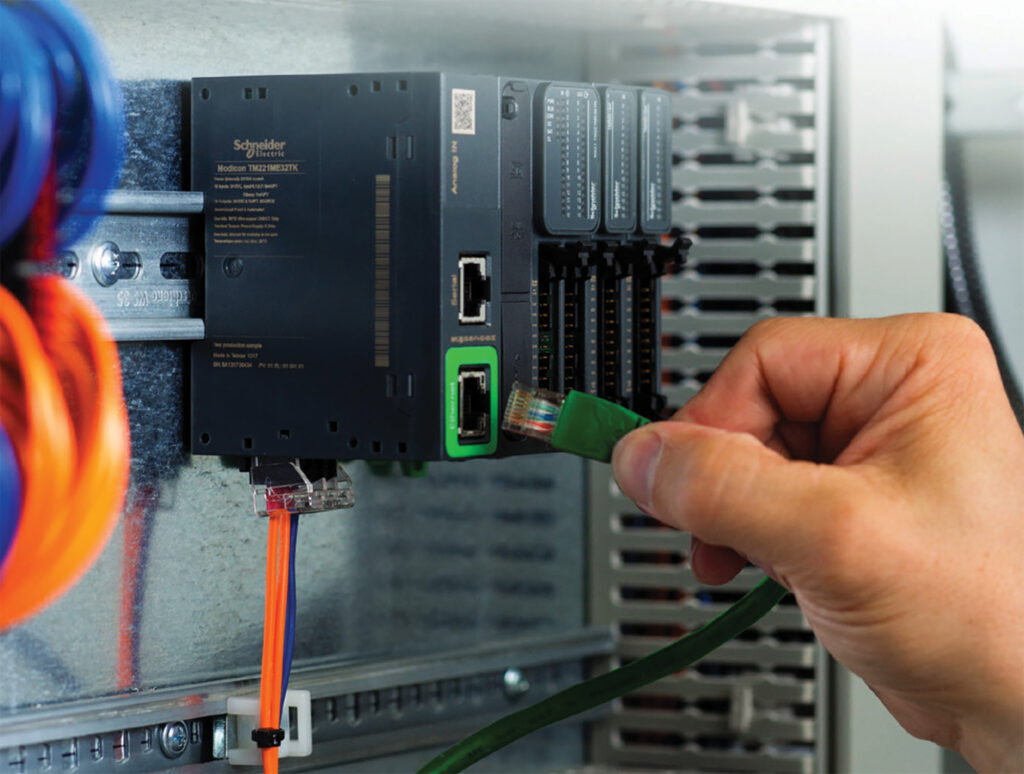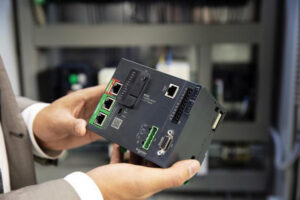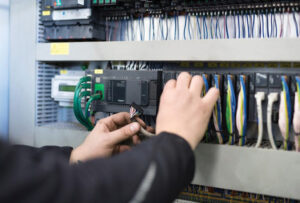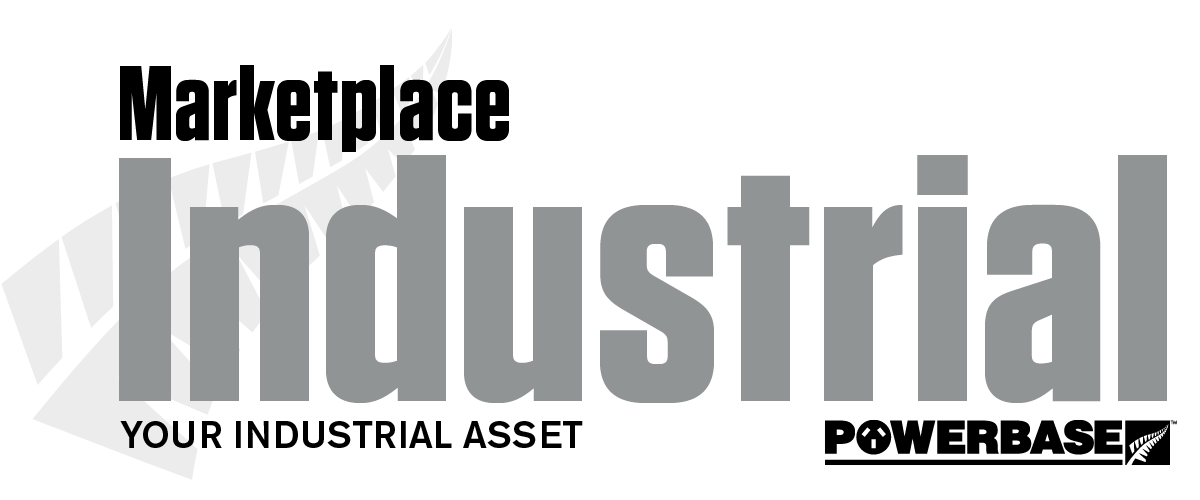In PLC Migration
This is the third white paper in Schneider Electric’s Profiting from PLC Migration, in a series of 3, designed to help manufacturers and municipalities evaluate their need for PLC upgrades and implement them with success.
This paper focuses on the migration process itself, providing a checklist of the key points to consider to achieve the benefits described before launching a PLC migration venture. The first and second papers published in previous Industrial Marketplace magazines focused on demonstrating ROI in the context of present and future profitability and the many ways in which modernization efforts contribute to plant profitability and improve operations.
Introduction
Whatever be the motivations for a PLC migration, going about it can itself be quite a challenging exercise. Upgrading or modernizing of the existing system to the latest offering from the same vendor itself can be tricky, leave aside migrating to another vendor. At a conceptual level, the challenges of modernizing or migrating PLCs are the same, only the degrees vary. Good news is that when a few simple factors are made part of the migration project, successful completion happens, and you can realize the expected short term and long-term outcomes.
So far in this series on Profiting from PLC Migration, we’ve looked at demonstrating ROI in the context of present and future profitability and elaborated on the many ways in which modernization efforts contribute to plant profitability and improve operations and maintenance. In this last paper in this series, we focus on the migration process itself, providing a few points that are critical to the success of a PLC migration venture.
Challenges in migration projects
Being a project activity, PLC migration is prone to all the common project constraints, including budget and resources. In addition, its intrinsic nature imposes some additional challenges:
Time constraints: As PLCs are an integral part of the operations, their replacements are typically done during a planned shut-down of the operation. Such shutdowns are usually as short as possible, to facilitate a restart of operations at the earliest. Within that constrained time window, often PLC replacement is squeezed in amongst many other activities. All this invariably results in the available cutover time, for the physical replacement, to be in hours or even in minutes.
Footprint differences: The footprint of the replacement usually does not match that of the existing PLC. This can pose challenges when retrofitting into existing cabinets itself, leave alone the problems it can cause if additional space is required.
Hardware technical dissimilarities: No two PLC platforms are the same, be it across generations or across types or across vendors. A module doing a particular function in the current platform may not have exactly similar technical characteristics as that of its predecessor. If not factored for, this can lead to surprises when the replacement is done.
Application portability: Again, no two PLC platforms are the same, be it across generations or across types or across vendors. In fact, despite similar look and feel, the software operating system of the newer platform might be completely different from the older one. This means that porting the proven application running in the incumbent PLC system to the newer one, is never as easy as backing up from the former and restoring to the latter.
Outdated documentation: Existing PLC systems usually have been running for more than a decade. In this time, the system hardware and software, would have deviated from its original state for various reasons. In the same period, odds are that the staff maintaining and supporting it, also has changed a few times over. These two factors often result in the most common challenge of a migration project – outdated documentation. What can often make this even more challenging, are any undocumented changes in the wiring and terminations.
Expertise on Legacy systems: Knowledge of the existing legacy PLC, in the best of situations, is usually quite uneven in the team implementing the migration project. While those interacting with the system regularly would be quite familiar with it, but not all of them would be fully involved throughout the migration project. This can introduce risks at any stage in the project, that can impact the outcome of the project. Even with a like-for-like before / after performance expectations, you can encounter some or all of these challenges. What’s more, unlike greenfield projects, the facility’s engineering and maintenance teams are usually on their own, when planning and implementing these migration projects. Then again, invariably the expectation justifiably is that the new system performs better than the older one, which also adds to the complexity. At Schneider Electric, we have been part of several migration projects, not only when customers are upgrading from our own legacy platforms, but also from that of other vendors. Based on this experience, time and again, we have observed the following factors that have proved quite helpful in overcoming these challenges:
- Thorough site assessment
- Right Tools
- Balanced Team

Site Assessment
The importance of a thorough assessment of the existing system running at site, cannot be overemphasized. This one factor alone goes a long way in knowing, anticipating, and avoiding the risks involved in PLC migration projects. The more the information collected through this and the earlier this activity is performed in the project, the better the outcome. At a minimum, the following should be part of the site survey:
- Walk-through inspection of the existing installation. Even the best of visual aids (drawings, photographs, videos etc.) cannot substitute the value a physical inspection provides.
- Relevant Information collection, including but not limited to as-built drawings, system architecture, application back-ups, control philosophy etc.
- Interviews of operations and maintenance staff related to the system to be migrated, to capture any deviations in the current state of the system from the information collected.
Right tools
Having the right tools can go a long way in the successful completion of PLC System modernizations. Amongst other things, they can be quite handy in supplementing the available knowledge on legacy systems, improving productivity and overall risk mitigation. Take for example a robust checklist for site surveys – it can ensure consistent collection of all the relevant information, without any miss-outs, thus helping in reducing subsequent risks. Similarly, tools for determining the hardware bill of material equivalent to the running legacy system, can help in mistake-proofing this step apart from identifying and reporting out differences between the old and new platforms. This not only simplifies this key aspect of designing the migration solution; it also helps in anticipating issues that can manifest only once the replacement is done at site. In comparison to software, simulating actual hardware operating conditions at site can be a challenge, and is often only possible during the cutover. If hardware differences aren’t anticipated and factored for, it can lead to avoidable project delays at the minimum.
Narrow cutover windows, is also a situation where industrialized adapters for making the existing legacy systems wiring compatible to the incoming hardware, prove their worth, especially when the replacement is within existing enclosures. In project after project, we have seen these wiring systems ensuring that not only are the tightest cutover times met, they are often beaten. And when that happens, operations can resume as planned or even earlier, leading to a significant positive financial impact. In addition to this, being an industrialized offering, there’s no need of developing and testing custom wiring solutions for the project, thereby improving overall productivity, and ensuring long term spares availability.
In a similar vein, software engineering tools too, can supplement the available knowledge, while having a very positive effect on project productivity and risk mitigation. When it comes to the application software, one of the first questions to ask is what would be the strategy for porting the code from the old platform to the new one – reuse or rewrite or both? Today, tools can help you make an informed decision about the strategy and then go about supporting you in executing it. By automating the conversion of code, especially repetitive code, tools can improve project productivity. That said, these tools, like web-based translation tools, usually don’t go the full distance, necessitating human intervention for refinement and testing.
Balanced team
In the end, it is the people involved in the project, who tie together the available information, tools and resources, to make the project successful. Generally, no two legacy PLC systems are the same, developing their unique persona, over a long period of operation and having had several changes of hands during that time. With time it also becomes increasingly challenging to get people knowledgeable on legacy systems, especially outside of the people involved in operating and maintaining these systems. Then again, these resources may not be aware of the capabilities of the newer platforms. Often, operational improvements enabled by the capabilities of the newer platforms, is also part of the migration project. When you combine all this, the need for a balanced team is selfevident.
The team composition being a balance of:
- Operational knowledge: Which helps in two ways i.e. in plugging gaps in information in the documentation & actual operation, and in guiding the implementation of operational improvements.
- Platform knowledge: This is about technical expertise in the hardware & software aspects of the project. Here, when looking for third party implementation partners, look for partners with trained & certified personnel.
- Implementation experience: Like a surgery, every migration is unique, with its own challenges & surprises. And like surgery, the choice is always between an experienced hand and a newbie. While knowledge helps in equipping you, implementation experience too is needed. Therefore, when looking for third party implementation partners, look for partners having experience implementing similar migration projects.


We know that a well-executed migration project, is critical to you being able to maximize all the benefits upgrading to our Modicon PAC (Programmable Automation Controller) platform can bring.This is why Schneider Electric has developed the following capabilities needed for a successful migration project:
- A comprehensive toolbox, comprising of industrialized tools relevant for every major stage of the migration project – from solution to implementing. Tools compatible with Schneider Electric’s as well as other legacy PLC platforms.
- Certified project delivery teams, internal & amongst our Alliance SIs, who are all well versed technically and experienced in implementing these projects.
- A central team to concentrate knowledge and support migration projects, for a reliable resolution to problems unique to a given implementation.
We understand that PLC migration projects can be quite tricky, especially since they are usually done in an operational facility. Taking care of a few simple points can contribute significantly in de-risking these projects and making them a long-term success. To do so, get in touch with your preferred choice of implementation provider, to smoothly translate your modernization roadmap into reality.


